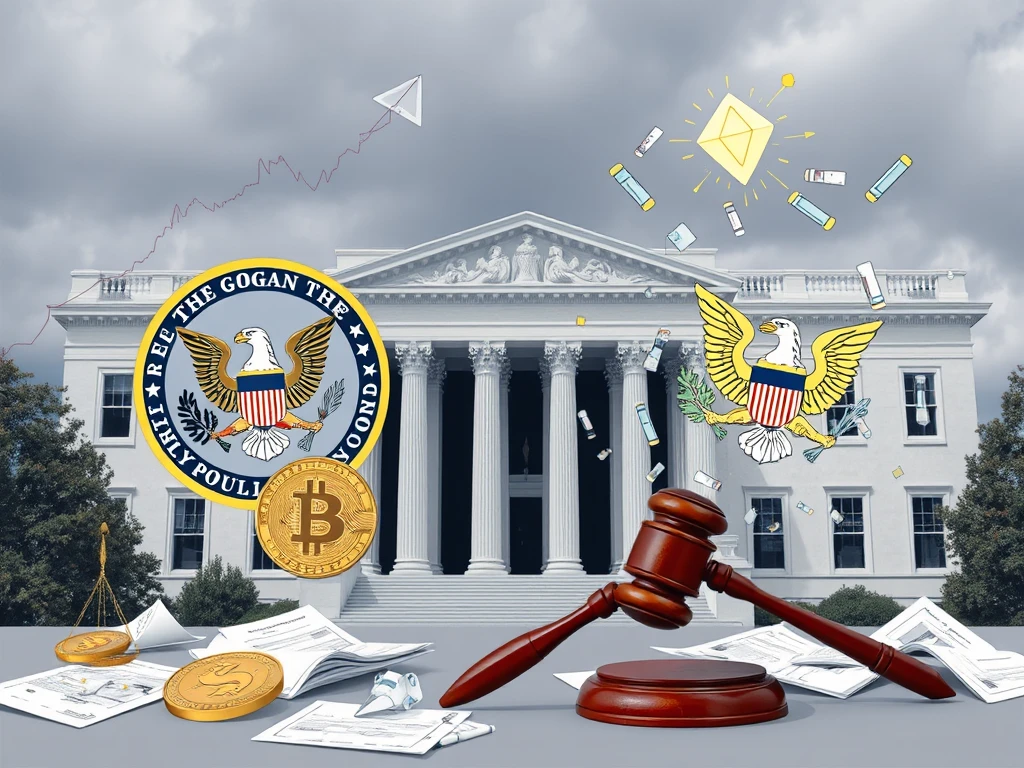SEC Crypto Staking Shift Sparks Intense Criticism

The world of SEC crypto regulation is rarely dull, but the latest developments regarding crypto staking services have ignited a firestorm of criticism. The U.S. Securities and Exchange Commission (SEC) is facing significant backlash from within and outside the agency over its shifting approach to regulating this popular aspect of the digital asset market.
Understanding the Latest SEC Guidance on Crypto Staking
On May 29, the SEC’s Division of Corporation Finance issued new guidance concerning crypto staking services. This guidance suggested that certain staking offerings might not qualify as securities, potentially exempting proof-of-stake blockchains from registration under the Securities Act. While seemingly providing clarity, this move has instead deepened confusion and sparked controversy.
Critics argue this new interpretation appears to contradict positions the SEC has taken in recent high-profile court cases. This inconsistency is a major point of contention for those seeking clear and predictable crypto regulation.
Why Critics Say SEC Guidance Contradicts Court Rulings
A central point of criticism is the apparent divergence between the SEC’s new guidance and federal court decisions:
- Binance Case: The SEC alleged Binance’s staking services were unregistered securities. While the case was ultimately dismissed, the initial allegations were based on the premise that staking could fall under securities law.
- Coinbase Case: A federal judge initially allowed the SEC’s case against Coinbase regarding its staking program to proceed, stating the agency had sufficiently argued it involved the unregistered sale of securities. This case was also later dismissed, but the court’s initial finding highlighted the potential securities nature of staking under existing law.
Former SEC chief of Internet Enforcement, John Reed Stark, publicly criticized the guidance, calling it a ‘shameful abdication’ of the agency’s mission and arguing it contradicts judicial findings in these significant cases.
Inside the SEC: Disagreement on Digital Assets
The criticism isn’t limited to external observers. Sitting SEC Commissioner Caroline Crenshaw also issued a statement disagreeing with the staff’s analysis. She argued the conclusions did not align with established case law or the long-standing Howey test used to determine if an investment is a security. Crenshaw described the approach as ‘yet another example of the SEC’s ongoing ‘fake it till we make it’ approach to crypto — taking action based on anticipation of future changes while ignoring existing law.’
This internal disagreement underscores the challenges the SEC faces in applying existing securities laws to novel digital assets like cryptocurrencies and staking services.
A Broader Shift in SEC Approach?
The new guidance follows a series of recent actions by the commission perceived by some as deregulatory steps concerning digital assets. These include closing investigations, dropping lawsuits, and engaging in discussions with industry participants. Critics like John Reed Stark view this trend negatively, suggesting it undermines the agency’s historical legacy.
However, other commissioners offer a different perspective. Commissioner Hester Peirce, speaking at a conference, emphasized that the classification of a securities transaction depends more on the nature of the deal itself than the underlying asset. She suggested that while most crypto assets might not be securities, they can still be sold in transactions that *are* securities transactions, highlighting the need for clearer guidance on the *transaction* aspect.
Conclusion: Confusion Reigns in Crypto Regulation
While the SEC states its actions aim to provide regulatory clarity, the outcome, according to many critics, has been the opposite. The new guidance on crypto staking, in particular, has intensified the debate over how digital assets should be regulated in the United States. The apparent contradictions with past enforcement actions and court rulings leave market participants grappling with uncertainty, waiting for a more consistent and predictable regulatory framework.









